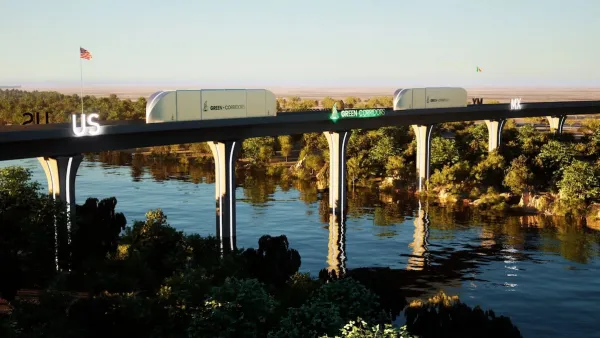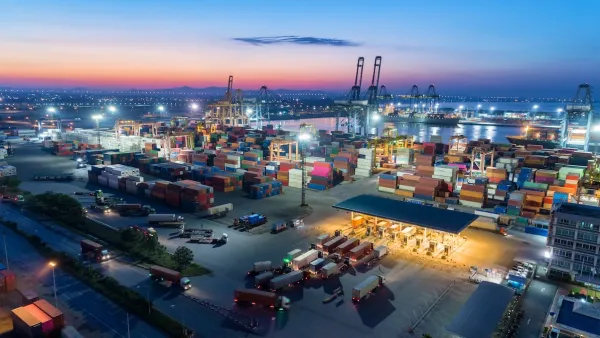Bruce Katz of the Brookings Institute explains the importance of exports to a metro region's economy. As the US Federal Government remains politically frozen, how can American cities grow economically by fostering trade partnerships across the world?
Katz's recent work, a report titled Export Nation 2012, examines the role that exports sectors in US metro areas play in the new global economy. Regions like Los Angeles hold vital positions in a country that does not properly value its export industries, Katz argues, and metro areas should take steps to establish positions in an increasingly urban global economy.
Katz points to a necessary shift in the United States' economic growth model from consumption and debt, pre-recession, to exports and global engagement in the future. And "With domestic demand crippled at home because of the housing collapse, because of the overhang of the recession, and because of global demand rising, we think it's time for cities and metros to reconsider their own economic development strategies by focusing on those firms, both in manufacturing and services, that can sell abroad."
While the federal government is "the big player on trade" when it comes to regulation, finance, and infrastructure, Katz believes cities need to become much more active in developing export strategies and making direct connections with trade partners.
"I would say over the next decade and onwards, being globally fluent and understanding your special position in the world and acting on that position through these sharp networks of trading cities will almost be a prerequisite for city and metropolitan success."
Thanks to Kevin Madden

Planetizen Federal Action Tracker
A weekly monitor of how Trump’s orders and actions are impacting planners and planning in America.

Restaurant Patios Were a Pandemic Win — Why Were They so Hard to Keep?
Social distancing requirements and changes in travel patterns prompted cities to pilot new uses for street and sidewalk space. Then it got complicated.

Maui's Vacation Rental Debate Turns Ugly
Verbal attacks, misinformation campaigns and fistfights plague a high-stakes debate to convert thousands of vacation rentals into long-term housing.

In California Battle of Housing vs. Environment, Housing Just Won
A new state law significantly limits the power of CEQA, an environmental review law that served as a powerful tool for blocking new development.

Boulder Eliminates Parking Minimums Citywide
Officials estimate the cost of building a single underground parking space at up to $100,000.

Orange County, Florida Adopts Largest US “Sprawl Repair” Code
The ‘Orange Code’ seeks to rectify decades of sprawl-inducing, car-oriented development.
Urban Design for Planners 1: Software Tools
This six-course series explores essential urban design concepts using open source software and equips planners with the tools they need to participate fully in the urban design process.
Planning for Universal Design
Learn the tools for implementing Universal Design in planning regulations.
Heyer Gruel & Associates PA
JM Goldson LLC
Custer County Colorado
City of Camden Redevelopment Agency
City of Astoria
Transportation Research & Education Center (TREC) at Portland State University
Camden Redevelopment Agency
City of Claremont
Municipality of Princeton (NJ)





























